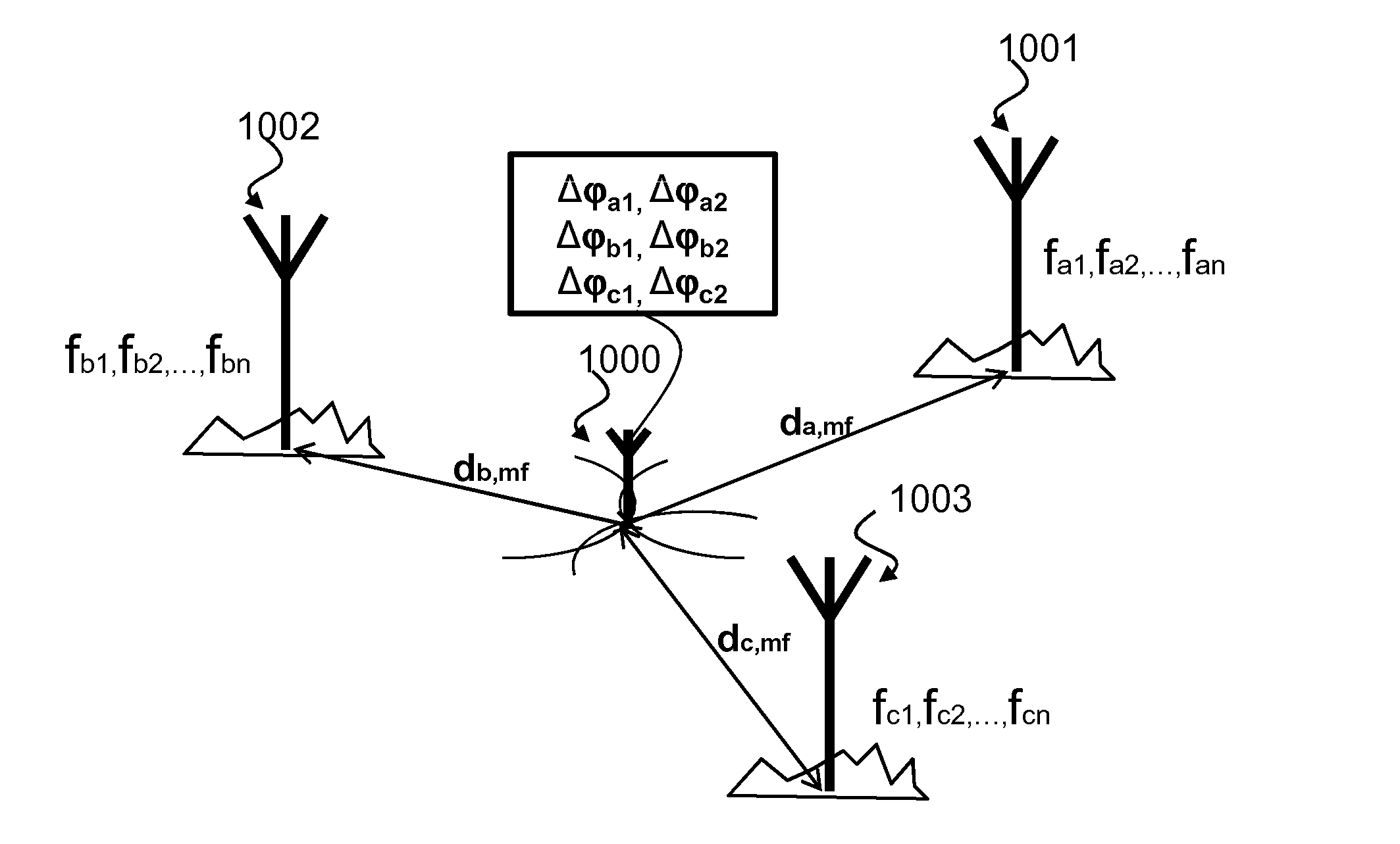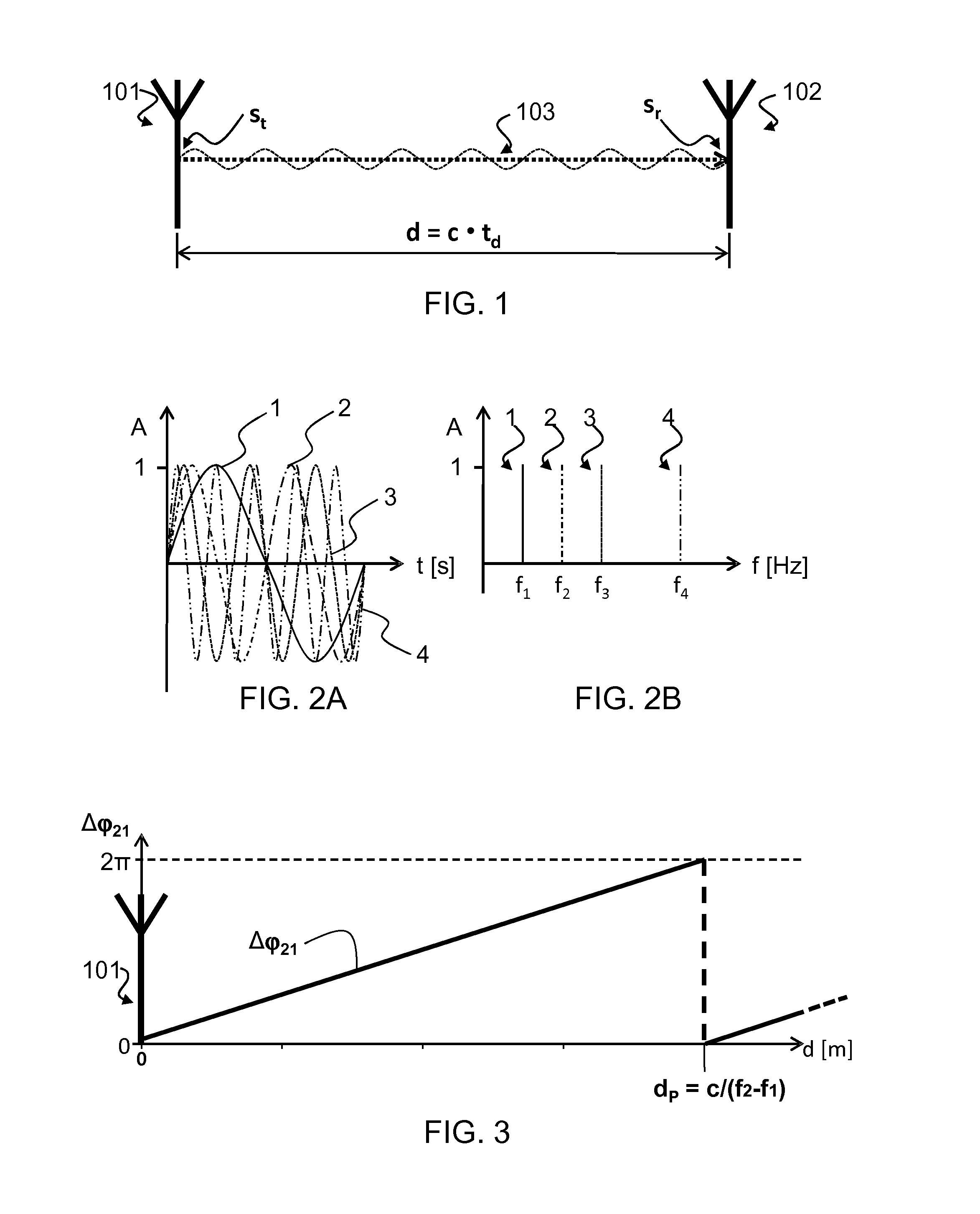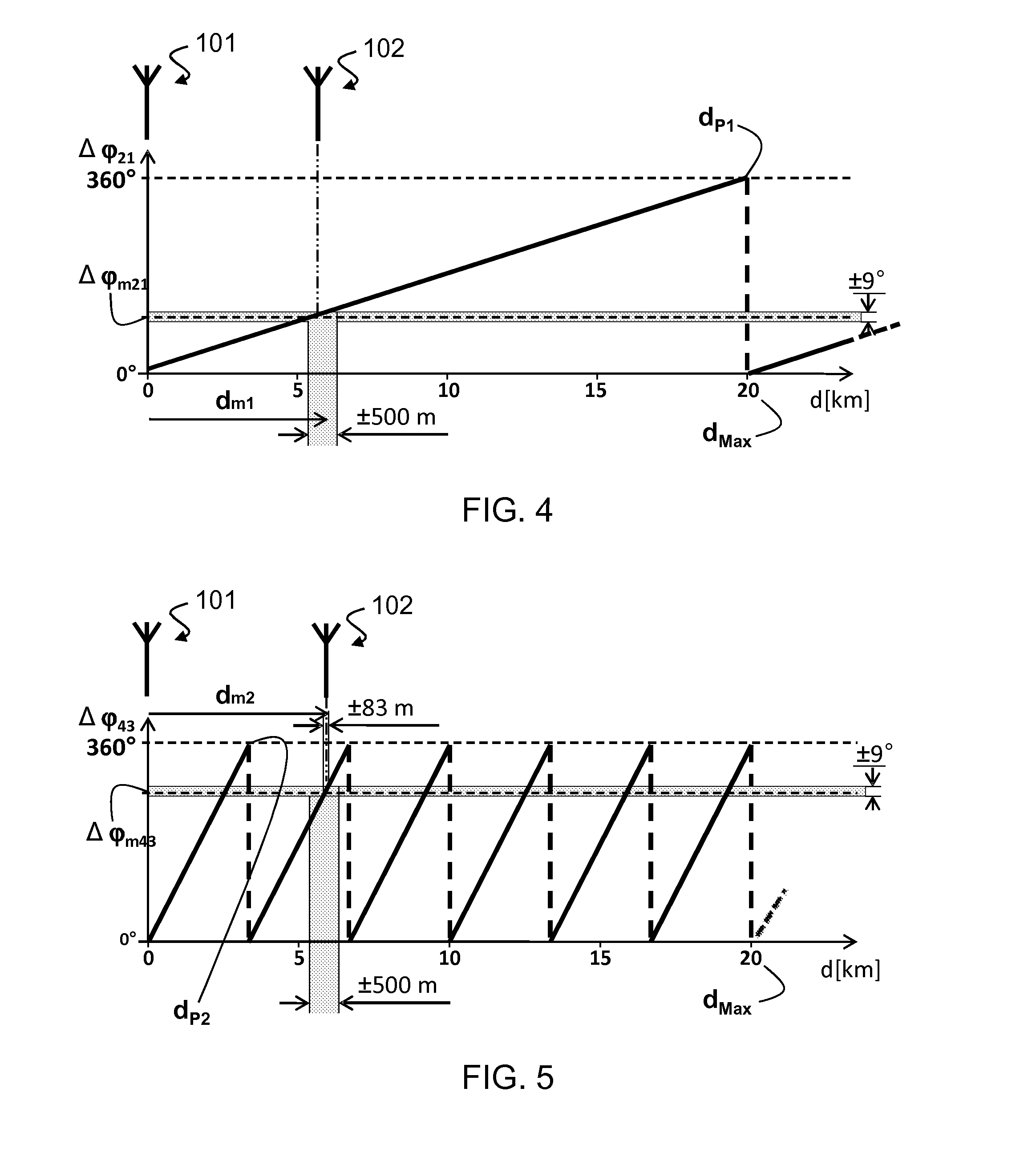Method for Estimating the Distance of a Receiver from a Radio Transmitter, Relative Methods for Calculating the Position of a Mobile Terminal, Mobile Terminal and Localization Device
a distance estimation and receiver technology, applied in the direction of location information based services, measurement devices, instruments, etc., can solve the problems of preventing the reception of satellite signals, affecting the accuracy of distance estimates, and unable to ensure service within closed buildings or areas with natural or artificial obstacles, so as to improve the accuracy of distance estimates, and improve the effect of phase difference measuremen
- Summary
- Abstract
- Description
- Claims
- Application Information
AI Technical Summary
Benefits of technology
Problems solved by technology
Method used
Image
Examples
Embodiment Construction
[0036]In the present description, the term “tone” refers to a sinusoidal signal having amplitude A, phase φ and frequency f. The radio signals are transmitted by “modulation”. In particular, the electromagnetic signal containing information is said to be “modulating”, and is impressed (i.e. modulated) on a tone; the signal thus modulated takes the name of “carrier”, or “subcarrier” if there is a subsequent frequency translation through another tone. The higher frequency translation is used for making the modulated signal suitable for irradiation by an antenna. At receiver level, the signal received by the antenna can be demodulated to isolate its components. In this manner, from a carrier it is possible to extract at least one respective tone.
[0037]Furthermore, in the present description the terms “receiver” and “transmitter” refer to devices adapted to transmit and receive radio signals, wherein the estimated distance is essentially the distance (in space, or approximated in the pl...
PUM
 Login to View More
Login to View More Abstract
Description
Claims
Application Information
 Login to View More
Login to View More - R&D
- Intellectual Property
- Life Sciences
- Materials
- Tech Scout
- Unparalleled Data Quality
- Higher Quality Content
- 60% Fewer Hallucinations
Browse by: Latest US Patents, China's latest patents, Technical Efficacy Thesaurus, Application Domain, Technology Topic, Popular Technical Reports.
© 2025 PatSnap. All rights reserved.Legal|Privacy policy|Modern Slavery Act Transparency Statement|Sitemap|About US| Contact US: help@patsnap.com



